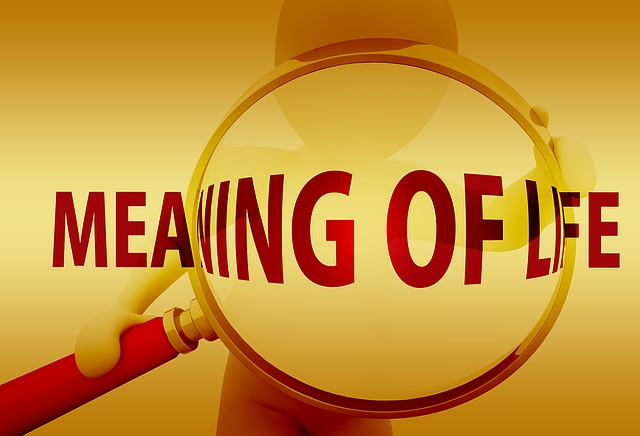Gregory P. Smith wrote a book explaining the practical steps and strategies that he employed to turn his life around from being friendless, homeless, unemployed and broke to living a life of fulfillment and contentment. His book, Better than Happiness: The True Antidote to Discontent, is a heartfelt exploration of his transformation where he openly discusses his anger, depression, and violence (to himself and others).
Gregory had previously spent 10 years alone in the forest to escape from a society that he found to be superficial, manipulative and harmful. The story of his survival in harsh forest conditions is captured in his book, Out of the Forest, where he explores his survival strategies and self-exploration. His escape to the forest was, in part, a reaction to his traumatic upbringing where he was physically beaten by his father, placed in an orphanage, suffered “negative labelling” by fellow school students, and treated with contempt in youth detention centres. He was unable to sustain employment because of his turbulent lifestyle, drinking to excess and doping on drugs.
Gregory has transformed incredibly completing a PhD, becoming an international speaker and advocate for the homeless and disadvantaged and achieving the Order of Australia award for his community contributions. His story incorporating the Order of Australia Medal award was captured in a 2023 episode of ABC’s Australian Story. Gregory strongly advocates that we do not ignore homeless people but give them a smile of acknowledgement (even if it is risky), as it can change their life.
The process of transformation
Gregory gave up alcohol and drugs and found a way to “become human” again. His process involved much soul-searching and vigilance to avoid “sliding back” and indulging in ‘self-destructive behaviours”. Gregory’s story of transformation is captured in the earlier Australian Story filmed in 2018. He also shared his story in a 2021 TEDx Talk, From Forest Hermit to Professor of Sociology (transcript available through this link).
In discussing his journey in various media and in his books, Gregory highlighted a number of key elements/strategies that enabled him to move beyond happiness to a life of contentment with his very significant social and academic roles and a farmed-based life with his family. These strategies included the following:
- Accepting that he had created his own diabolical situation: instead of blaming others for his unhappy life, lack of friendships and homelessness, he began to acknowledge that his adverse situation was the result of choices that had made. Instead seeing himself as a “victim” powerless to change, he recognised that he could turn his life around if only he had the resolve and willingness to do whatever was needed to improve his life and achieve contentment (a positive state beyond happiness). Gregory focused on “acceptance” of what is – the fact that his “deepest wounds were self-inflicted” and that his internal battles had been “destructive.” He needed to develop the serenity to accept what he could not change, build the courage to change the things that were within his control, acquire the wisdom to discern the difference and understand his “locus of control”.
- Forming an intention: Gregory resolved at the outset of his changed approach to “be a better man”. This unshakeable resolve led to many changes in the way he viewed the world and people in it. He had to challenge his attitudes and reframe how he thought about himself. Intention forming helped him reshape his life.
- Giving up alcohol and drugs: this was a foundational decision in line with his intention. He knew from his experience of alcoholism and addiction that he could not pursue his resolve without giving up the power that alcohol and drugs had over him. He realised, too, that his addictions were an ineffective way to deal with the pain of his traumatic childhood and adolescence. Gregory had to ward off the commercial and social pressures that tried to force him to conform to others’ drinking and drug taking habits. Once he became sober and drug-free, he found that he could begin to think clearly, make sound choices and plan his next steps. However, the journey into sobriety was a difficult one, testing him continuously.
- Taking one day at a time: the complexity of the personal changes Gregory had to make were sometimes overwhelming. However, his resolve “to take it one day at a time” enabled him to deal with bite-size chunks in terms of attitude and behavioural change. His philosophy “to begin small” helped him to achieve small personal changes that became reinforcing in terms of the direction he was trying to head in – they also served to build his sense of self-efficacy.
- Volunteering with the RSPCA: Gregory had been a forest recluse for 10 years and was consumed by anger and hate as a result of his physical and psychological abuse in early childhood and debilitating detention experienced in adolescence. He did not trust people and found it impossible to talk to them. He decided to take the small step of volunteering with the RSPCA looking after dogs which enabled him to get in touch with the furry animals that he loved but also to begin to engage, slowly but surely, with other volunteers. He also tried Alcohol Anonymous but found that regular participation was not for him – he did acknowledge that on the infrequent occasions he attended a meeting, he learned something from his fellow sufferers.
- Gaining an education: Gregory believed that education would open doors for him. Again, he decided to start small and enrolled in a Certificate 1 in Information Technology which when he passed gave him the belief in his ability to study and learn and do well in education. Being “pumped and motivated”, he then enrolled in a bridging course at Southport TAFE which enabled him to eventually enrol in a university course. He decided to undertake a course in sociology at the Coffs Harbour campus of Southern Cross University. This led to an invitation to take on an Honours Degree. His successful achievement of First Class Honours resulted in the offer of a Australian Postgraduate Award Scholarship to do his PhD.
- Jettisoning labels: At every stage of his life, Geoffrey had to deal with negative labels. In his book on contentment, he explains the process and difficulty he experienced in “peeling labels”. He realised that negative labels repeated often become a part of your self-perception (almost by osmosis). He had been called “stupid’ throughout his life and was labelled a “sociopath” by a psychologist. He did engage in anti-social behaviour and was violent at stages of his life, but deep down he had an intense desire to do the right thing and be morally upright. Gregory’s ongoing academic achievements served as evidence that the negative labels he had been branded with were, in fact, false and were often promoted by people who were envious of his free thinking and outstanding transformation. There were always naysayers who tried to deter him or belittle his goal to “be a better man”.
- Changing attitudes: Gregory had to change his attitudes and particularly the way he viewed other people. Instead of making them conform to his expectations (sometimes violently), he began to acknowledge peoples’ idiosyncrasies and accept that people are different and that is okay. He focused on himself instead and tried to be the best he could be. However, he acknowledged that “changing an attitude requires constant effort and vigilance”.
- Being in the present moment: one of the things Gregory learned as a recluse in the rainforest was the power of the “present moment”. Despite the hardship and deprivation he experienced in this reclusive existence, he was able to focus in on the present moment and appreciate the beauty that surrounded him in the plants, birds, trees and mountains. He experienced the Power of Now that was a key learning of Eckhart Tolle during his period of homelessness. Gregory was able to use the power of the present moment to manage the challenges that beset him in his transformation journey.
- Managing his anger and resentment: after an angry outburst or physical altercation, Gregory would critically analyse what happened – what were the triggers?; what were his thoughts?; what words and actions did he employ?; what was behind his resentment? He came to realise what Viktor Frankl discovered in the concentration camp that there was a “gap” between a stimulus (such as a trigger) and a response and that real freedom lies in that gap and the power to choose how to react.
- Framing his life as a “three-day-week”: Gregory had to resist the natural tendency to dwell on the past (which leads to depression) or to obsess about the future (which leads to anxiety). He adopted the concept of the three-day-week as a way to frame his life – “yesterday, today, tomorrow”. In this way, he could reflect on the day that had passed and take learnings from it, plan his activities for the following day and spend as much time as possible in the present moment.
Reflection
Greg Hassall in writing about how Gregory “survived homelessness, addiction, and abuse” suggested that Gregory’s greatest contribution is to provide a living example of the ability to change and to challenge those who believe that they cannot change because “we are captive to our own histories”.
Gregory argues that “changing who you are is a great adventure” – you need to identify what you will take with you in terms of attitudes and what you have to leave behind. He showed that intention, being in the present moment, critical reflection and education go a long way to facilitating the necessary changes.
As we grow mindfulness through reflection and present moment awareness, we can develop self-awareness and insight, gain the courage and creativity to change and achieve contentment with our life. Gregory reminds us that “contentment takes thought, mindfulness, planning, self-reflection, patience and vigilance”.
___________________________________________
Image by Patty Jansen from Pixabay
By Ron Passfield – Copyright (Creative Commons license, Attribution–Non Commercial–No Derivatives)
Disclosure: If you purchase a product through this site, I may earn a commission which will help to pay for the site, the associated Meetup group and the resources to support the blog.









